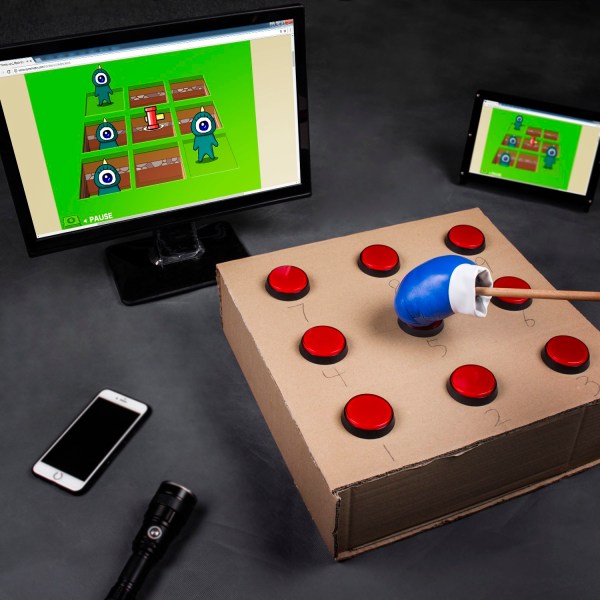By now most floppy disks have been relegated to the dustbin of history, with a few exceptions for obscure industrial applications using legacy hardware and, of course, much of the world’s nuclear weapons arsenals. In fact, they’re so rare to see in the world anymore that many below a certain age don’t recognize the “save” symbol commonly used in application user interfaces. Without a use case, and with plenty of old floppies still laying around, [Rob] took a pile of them and built this Whack-a-Mole-style game.
The game has a number of floppy-disk-specific features compared to the arcade classic, though. First, there’s no mallet, so the player must push the floppy disks into the drive manually. Second, [Rob] went to somewhat exceptional lengths to customize the drives to that sometimes the disks jump out of the drive, forcing the player to grab them and put them back in to score points in the game. He did this without needing to install high-powered solenoids in the drives too. As for the game software itself, it all runs on an Amiga 600 and even includes a custom-made soundtrack for the 30-second game.
Getting the drives just right did take a number of prototypes, but after a few versions [Rob] has a working game that looks fun to play and is a clever use of aging hardware, not to mention the fact that it runs on a retro computer as well. Of course, for the true retro feel, you’ll want to make sure you find a CRT for the display somewhere, even though they’re getting harder to find now than old floppy disk drives.














